
Okinawa: The Jewel of Japan's Southern Isles
Discover Okinawa, Japan's tropical paradise, where vibrant coral reefs, historic sites, and unique cuisine create an island getaway like no other.
Okinawa is a tropical paradise nestled in the southernmost part of Japan. This captivating island offers a unique blend of Japanese and Ryukyuan culture, historic sites, and stunning natural beauty. The warm climate and crystal-clear waters make it a year-round destination for travelers seeking both relaxation and adventure. One of the highlights of Okinawa is its vibrant coral reefs, which offer some of the best snorkeling and diving experiences in the world. The island is also home to a rich history, with landmarks such as Shuri Castle and the Okinawa Peace Memorial Park providing deep insights into its past. Visitors can explore the labyrinthine streets of Naha, the island's capital, where traditional craft shops and bustling markets present a feast for the senses. Food lovers will delight in Okinawa's unique cuisine, which includes dishes such as goya champuru, Okinawa soba, and sata andagi. The island's distinct culinary offerings reflect its diverse cultural influences and are a must-try for any visitor. With its warm hospitality, scenic landscapes, and rich cultural heritage, Okinawa promises an unforgettable travel experience.
Local tips in Okinawa
- Visit the Okinawa Churaumi Aquarium early in the morning to avoid the crowds and enjoy the marine life at your own pace.
- Rent a car to explore the island at your leisure, as public transportation options can be limited in some areas.
- Try to visit during the off-peak seasons, such as late spring or early autumn, for pleasant weather and fewer tourists.
- Don't miss a trip to Kokusai Street in Naha for shopping and dining; it's a great place to find unique souvenirs and try local food.
- Make sure to bring reef-safe sunscreen to protect Okinawa’s beautiful coral reefs while enjoying water activities.
Okinawa: The Jewel of Japan's Southern Isles
Okinawa is a tropical paradise nestled in the southernmost part of Japan. This captivating island offers a unique blend of Japanese and Ryukyuan culture, historic sites, and stunning natural beauty. The warm climate and crystal-clear waters make it a year-round destination for travelers seeking both relaxation and adventure. One of the highlights of Okinawa is its vibrant coral reefs, which offer some of the best snorkeling and diving experiences in the world. The island is also home to a rich history, with landmarks such as Shuri Castle and the Okinawa Peace Memorial Park providing deep insights into its past. Visitors can explore the labyrinthine streets of Naha, the island's capital, where traditional craft shops and bustling markets present a feast for the senses. Food lovers will delight in Okinawa's unique cuisine, which includes dishes such as goya champuru, Okinawa soba, and sata andagi. The island's distinct culinary offerings reflect its diverse cultural influences and are a must-try for any visitor. With its warm hospitality, scenic landscapes, and rich cultural heritage, Okinawa promises an unforgettable travel experience.
When is the best time to go to Okinawa?
Iconic landmarks you can’t miss
Okinawa Churaumi Aquarium
Discover the beauty of marine life at Okinawa Churaumi Aquarium, home to whale sharks and vibrant ocean exhibits in a stunning coastal setting.
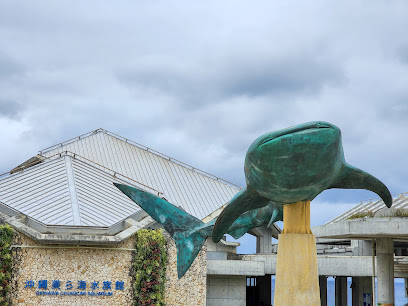
Shuri Castle
Explore the rich history and stunning architecture of Shuri Castle, a UNESCO World Heritage Site in Okinawa, Japan.
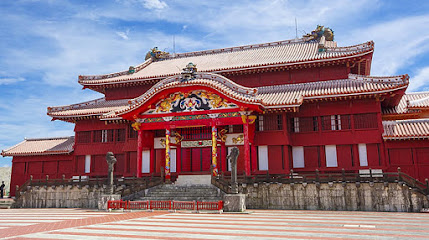
Cape Manzamo
Discover the breathtaking beauty of Cape Manzamo in Okinawa, where stunning cliffs meet the azure waters of the East China Sea.

American Village
Explore the vibrant American Village in Okinawa, a perfect blend of American culture, shopping, and dining with a unique Okinawan flair.

Okinawa World
Discover the cultural treasures and stunning natural beauty of Okinawa World, a theme park where tradition and adventure come alive.
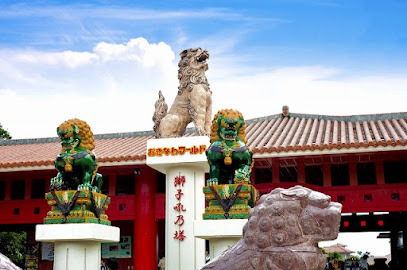
Naminoue Shrine
Discover the serene beauty and cultural significance of Naminoue Shrine, a stunning Shinto sanctuary overlooking the ocean in Naha, Okinawa.
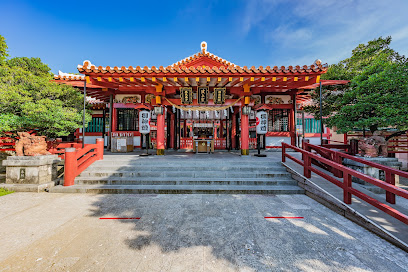
Kouri Bridge View Point
Discover the stunning Kouri Bridge View Point in Okinawa, a breathtaking observation deck offering panoramic views of azure waters and lush landscapes.
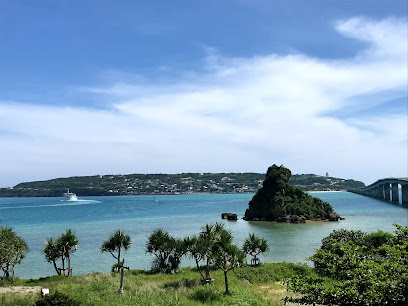
Ryukyu Mura
Discover the enchanting culture of Okinawa at Ryukyu Mura, a theme park blending history, tradition, and fun for all ages.
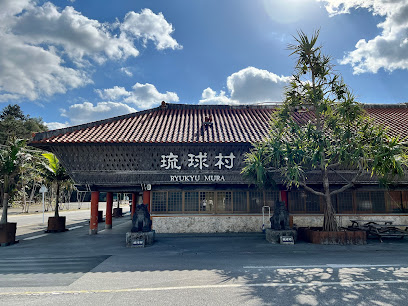
Peace Memorial Park
Explore Peace Memorial Park in Okinawa, a serene tribute to resilience and peace, with lush landscapes and poignant historical significance.
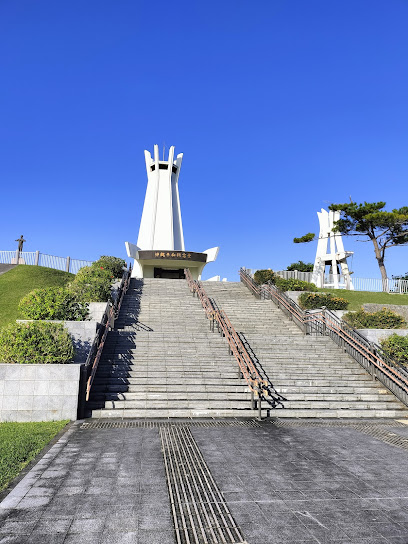
Nakijin Castle Ruins
Discover the rich history and stunning landscapes of Nakijin Castle Ruins, an iconic historical landmark in Okinawa, Japan.
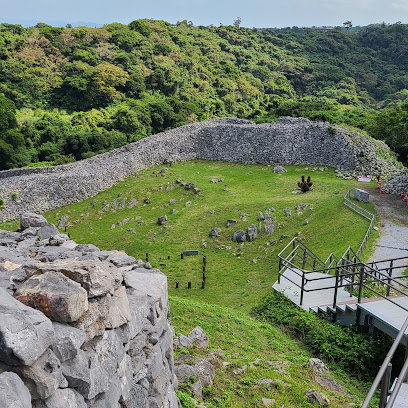
Katsuren Castle Ruins
Discover the enchanting Katsuren Castle Ruins in Okinawa, a historical landmark steeped in rich heritage and stunning ocean views.
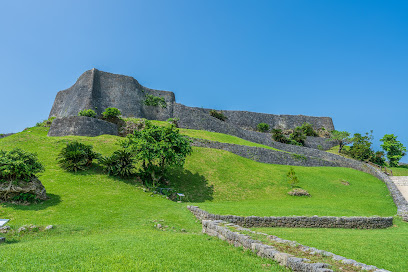
Sefa-Utaki
Discover the spiritual heart of Okinawa at Sefa-Utaki, a UNESCO World Heritage site filled with breathtaking landscapes and rich cultural history.
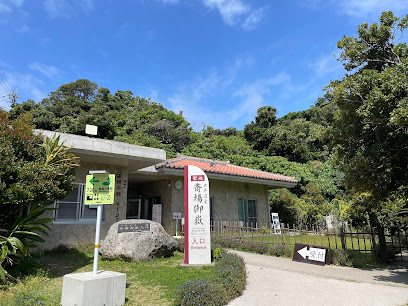
Valley of Gangala
Explore the breathtaking Valley of Gangala, a natural wonder in Okinawa, rich in history and stunning landscapes perfect for every traveler.
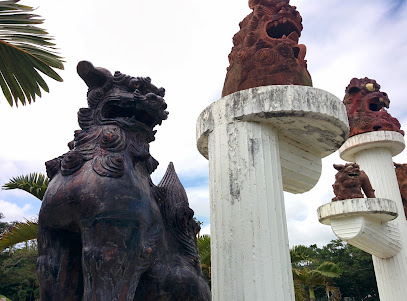
Tamatorizaki Observation Platform
Experience the stunning vistas of Ishigaki Island at Tamatorizaki Observation Platform, a must-visit gem in Okinawa offering panoramic views and natural beauty.
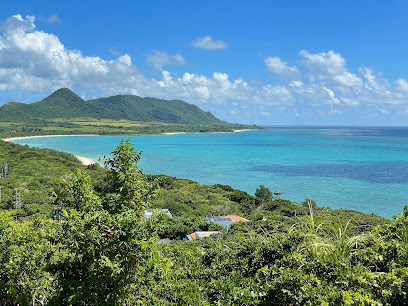
Zakimi Castle Ruins
Discover the rich history and stunning views at Zakimi Castle Ruins, a must-visit historical site in Yomitan, Okinawa, steeped in Ryukyu Kingdom heritage.
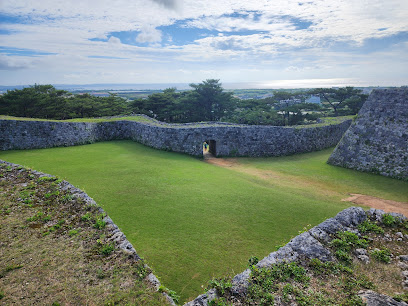
Unmissable attractions to see
Okinawa Churaumi Aquarium
Explore the breathtaking marine life at Okinawa Churaumi Aquarium, home to the world's largest Kuroshio Sea tank and a vibrant array of sea creatures.
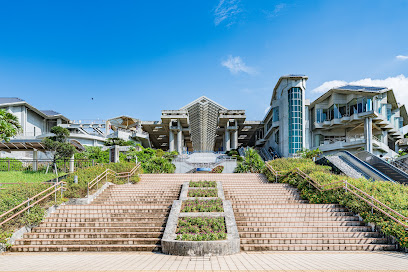
Shurijō Castle
Discover the rich heritage and stunning beauty of Shurijō Castle, a UNESCO World Heritage site and a symbol of the Ryukyu Kingdom's legacy in Okinawa.
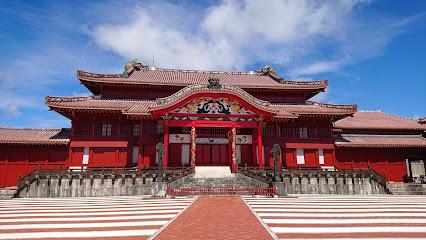
American Village
Explore American Village in Okinawa for a unique blend of shopping, dining, and vibrant culture against stunning ocean views.
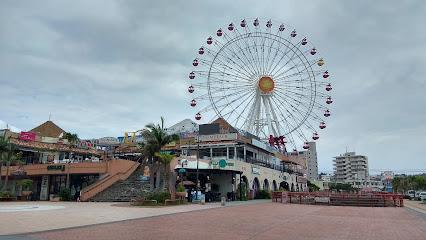
Cape Manzamo
Discover the breathtaking views at Cape Manzamo, a scenic spot in Okinawa known for its iconic elephant trunk rock formation and stunning coastal landscape.
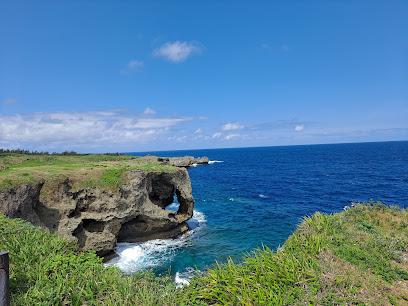
Umikaji Terrace Senagajima
Explore Umikaji Terrace Senagajima, a stunning blend of shopping, dining, and breathtaking ocean views in Okinawa's coastal paradise.
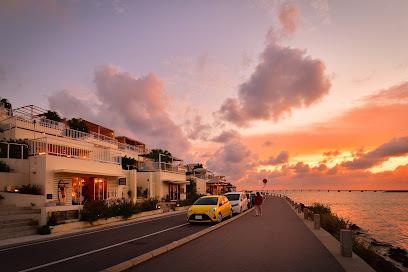
Ocean Expo Park
Explore Ocean Expo Park in Okinawa: a breathtaking mix of marine wonders, cultural experiences, and stunning natural beauty.
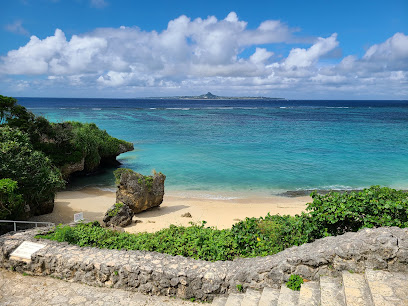
Okinawa World
Discover the cultural and natural beauty of Okinawa at Okinawa World, a theme park offering immersive experiences and unforgettable adventures.
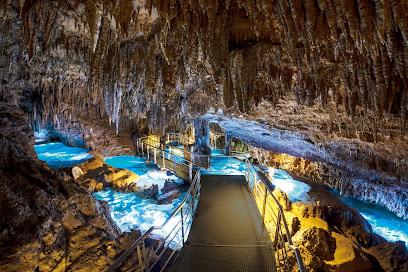
Nago Pineapple Park
Experience the tropical charm of Nago Pineapple Park in Okinawa, where pineapple delights and fun attractions await every visitor.
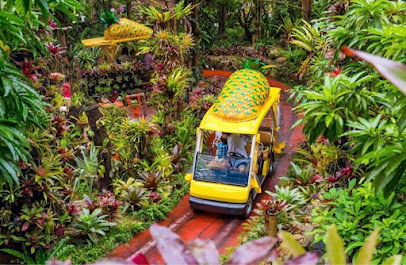
Kouri Bridge View Point
Discover the stunning Kouri Bridge View Point in Okinawa, where breathtaking landscapes and serene ocean views await every tourist.
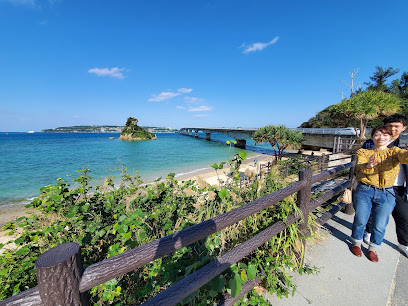
Ryukyu Mura
Discover the rich cultural heritage of Okinawa at Ryukyu Mura, a vibrant theme park filled with traditional arts, performances, and stunning landscapes.
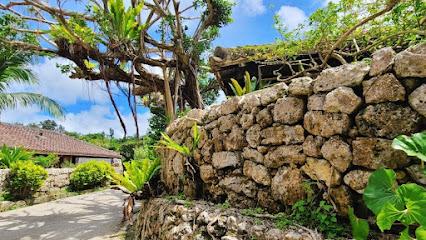
Peace Memorial Park
Discover the serene beauty of Peace Memorial Park in Okinawa, a poignant site honoring the resilience and memory of those lost during the Battle of Okinawa.
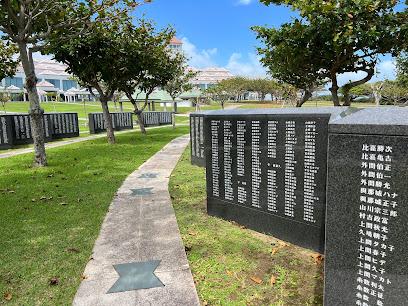
Nakijin Castle Ruins
Discover the historic Nakijin Castle Ruins in Okinawa, a stunning blend of history and natural beauty that transports you back to the Ryukyu Kingdom era.
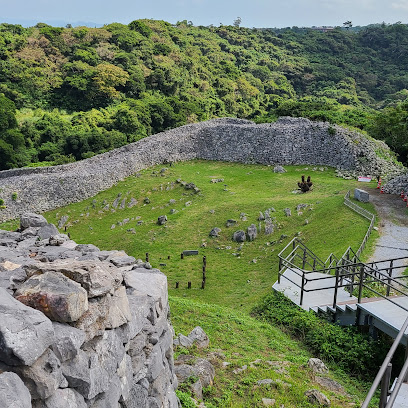
Cape Hedo
Discover the stunning views and natural beauty at Cape Hedo, the northernmost point of Okinawa, a must-visit scenic spot for every traveler.
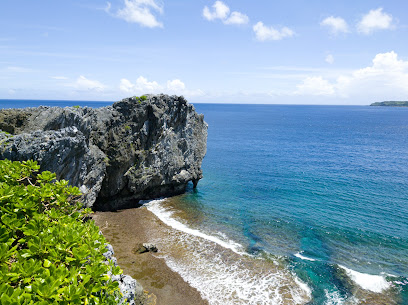
Okinawa Prefectural Museum & Art Museum
Explore the cultural treasures of Okinawa at the Okinawa Prefectural Museum & Art Museum, a vibrant hub of history, art, and heritage.
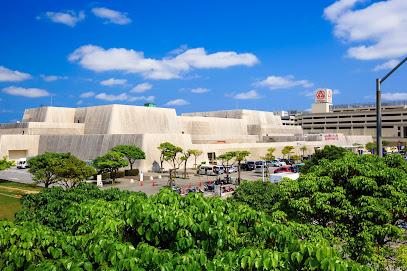
Sefa-Utaki
Discover the spiritual heart of Okinawa at Sefa-Utaki, a stunning UNESCO World Heritage site blending natural beauty and rich cultural history.
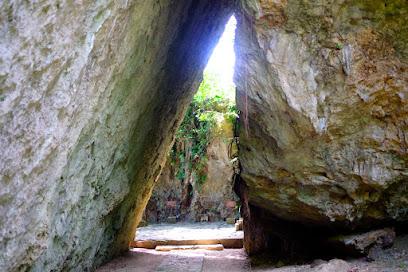
Essential places to dine
Seaside Drive In
Discover the flavors of Okinawa at Seaside Drive In, where delicious sandwiches meet stunning coastal views.

Sam's By-The-Sea
Discover delightful steak and seafood at Sam's By-The-Sea - A Hawaiian-themed culinary treasure in Okinawa.
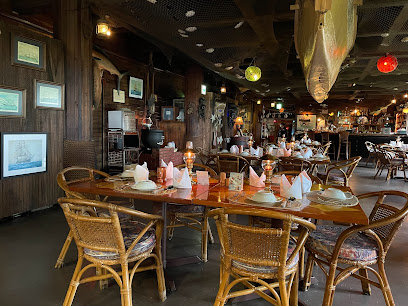
Urizun
Experience authentic Japanese izakaya dining at Urizun in Naha—where traditional flavors meet a cozy atmosphere.

Drive-in Restaurant Hawaii
Experience Okinawan cuisine at Drive-in Restaurant Hawaii – where delicious meals meet family-friendly vibes in a unique drive-in setting.
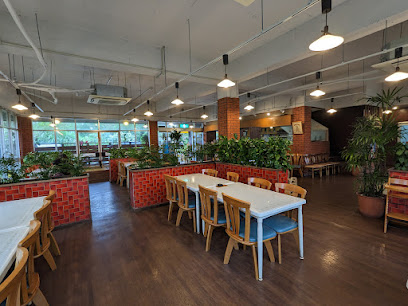
Ryukyutei
Savor authentic Japanese izakaya cuisine at Ryukyutei in Onna, Okinawa - where every bite tells a story.
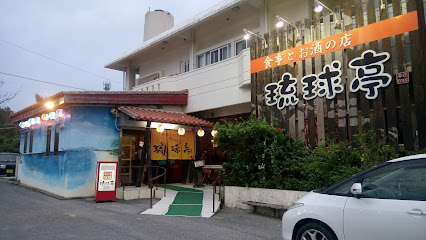
Cafe Orleans
Discover the authentic taste of Cajun cuisine at Cafe Orleans in Okinawa - where Southern hospitality meets island charm.
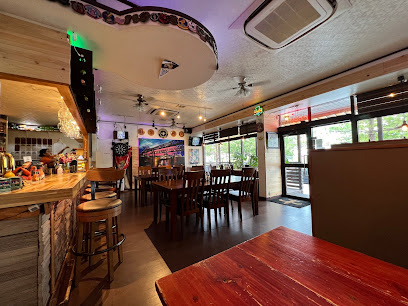
Nuchigafu
Experience the authentic flavors of Okinawa at Nuchigafu, where tradition meets modern dining in the heart of Naha.
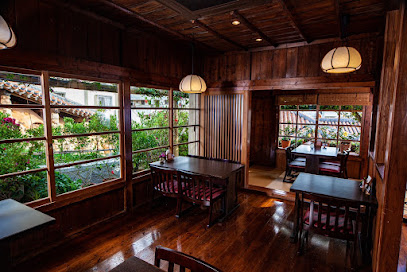
Restaurant Kuni
Experience the unique taste of Okinawa at Restaurant Kuni - where delicious steaks meet local hospitality.

Somchai
Discover authentic Thai flavors at Somchai in Okinawa – where culinary tradition meets modern dining.
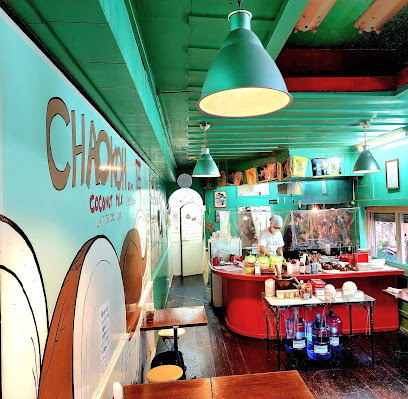
DOS MANOS
Discover the vibrant flavors of Mexico at DOS MANOS, Okinawa's premier destination for authentic Mexican cuisine.
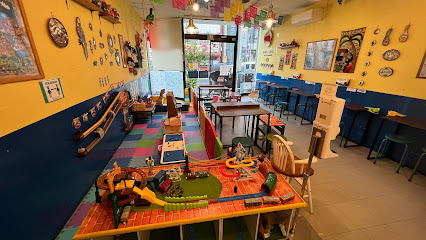
Emerald Oceanside
Discover the best steaks and hamburgers at Emerald Oceanside in Chatan, Okinawa—where flavor meets ocean views.
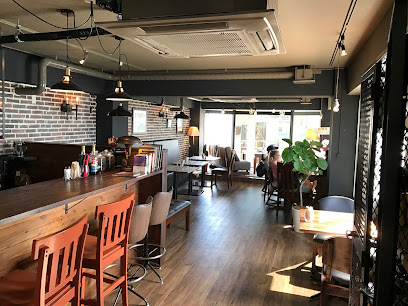
Ryu Chinese Food
Discover the authentic flavors of China at Ryu Chinese Food in Kitanakagusuku, Okinawa—where every dish tells a story.
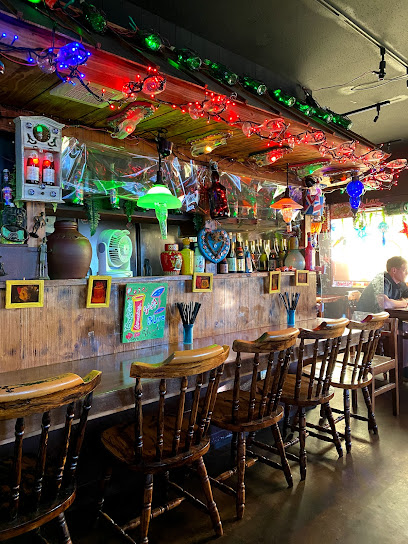
ILE DE RÉ Okinawa
Discover exquisite French cuisine at Île de Ré Okinawa – where culinary artistry meets local flavors in a stunning setting.
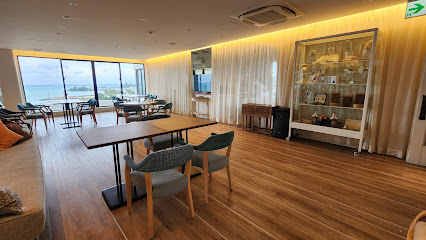
Gajimaru Cafe&Bar
Discover culinary bliss at Gajimaru Cafe & Bar, where vibrant vegan dishes meet serene Okinawan surroundings.
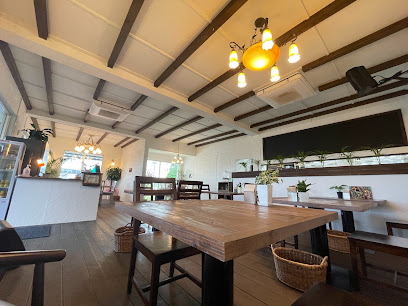
Kuiko Kebabu
Experience authentic Persian cuisine at Kuiko Kebabu in Okinawa - home to delicious kebabs and warm hospitality.
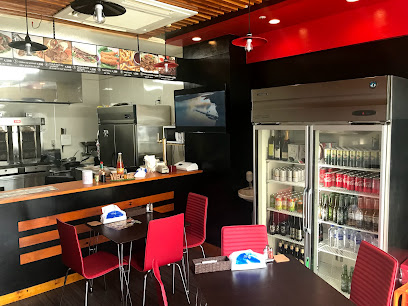
Markets, malls and hidden boutiques
AEON MALL Okinawa Rycom
Experience the ultimate shopping destination in Okinawa with AEON MALL, featuring diverse retail, delicious food, and cultural treasures.
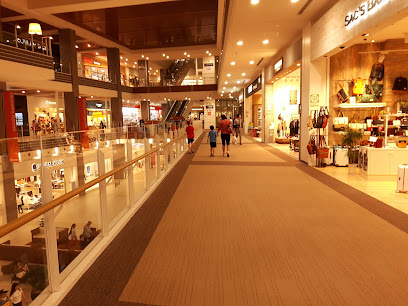
Okinawa Outlet Mall Ashibinaa
Discover unbeatable shopping deals and local cuisine at Okinawa Outlet Mall Ashibinaa, the perfect destination for tourists in Japan.
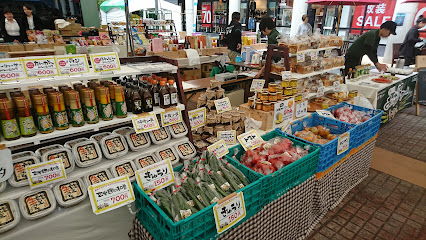
T ギャラリア 沖縄 by DFS
Experience luxury shopping at T ギャラリア 沖縄 by DFS, your premier destination for duty-free beauty, fashion, and unique Okinawan souvenirs.
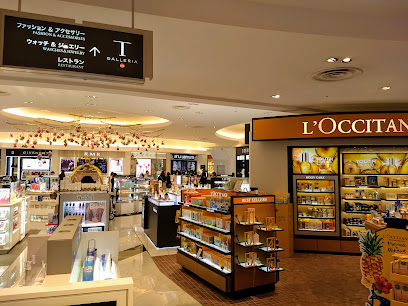
Plaza House Shopping Center
Discover the vibrant shopping experience at Plaza House Shopping Center in Okinawa, where tradition meets modern retail bliss.
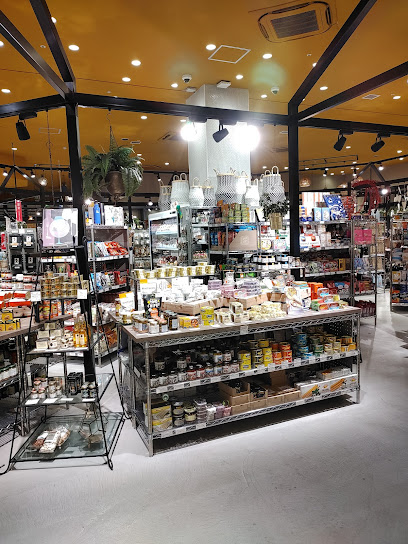
Manga Souko Awase
Explore the charm of Manga Souko Awase, Okinawa's ultimate second-hand store for vintage collectibles and unique pop culture treasures.
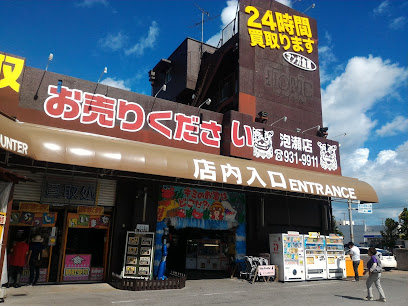
Hands Ginowan Convention City
Discover a unique shopping experience at Hands Ginowan Convention City, featuring gifts, home goods, and more in Okinawa.

無印良品 ハンビータウン
Explore the essence of minimalist design and quality lifestyle products at Muji in Hanbi Town, Okinawa.

Awase Mall
Discover Awase Mall in Okinawa: a vibrant shopping center blending local culture, diverse dining, and entertainment for a memorable experience.
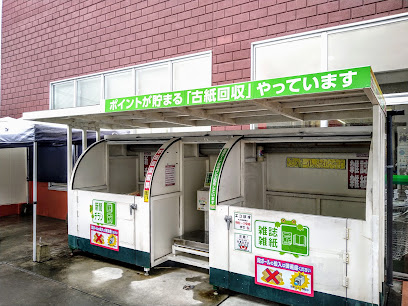
Cargoes Shopping Mall
Explore Cargoes Shopping Mall in Naha, Okinawa for a unique blend of shopping, dining, and cultural experiences.
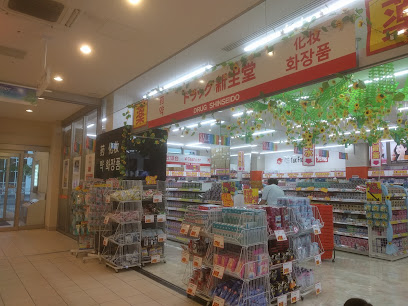
Bunkaya
Explore Bunkaya in Naha for unique Okinawan souvenirs, handcrafted gifts, and a taste of local culture in a welcoming atmosphere.
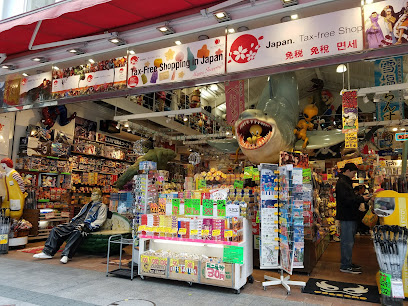
American Depot B
Explore the vibrant shopping scene at American Depot B in Okinawa, featuring local crafts, trendy boutiques, and delicious dining options.
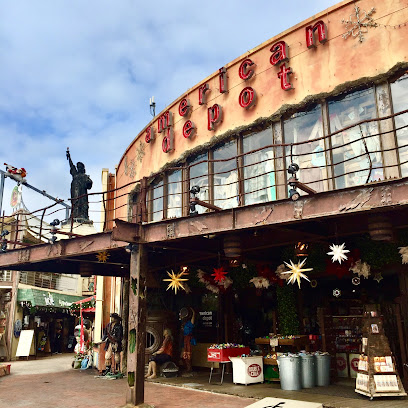
Churaon
Discover unique Okinawan souvenirs at Churaon, your go-to gift shop for authentic island treasures and memorable keepsakes.

Village Vanguard AEON MALL Okinawa Rycom store
Explore the whimsical Village Vanguard AEON MALL Okinawa Rycom, where shopping meets culture in an unforgettable experience.
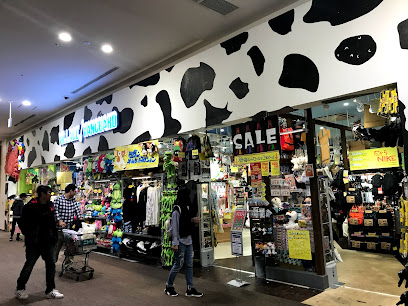
SOHO
Explore SOHO in Okinawa for a unique blend of antiques and fashion that captures the island's rich heritage and modern trends.
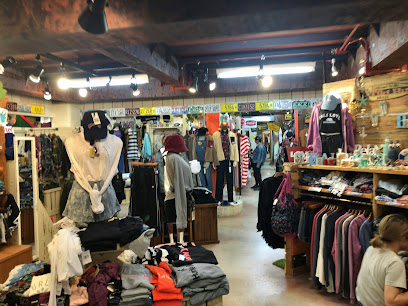
Chuo Park Avenue
Discover Chuo Park Avenue in Okinawa, a vibrant shopping mall that offers a unique blend of local culture, international brands, and delightful dining experiences.
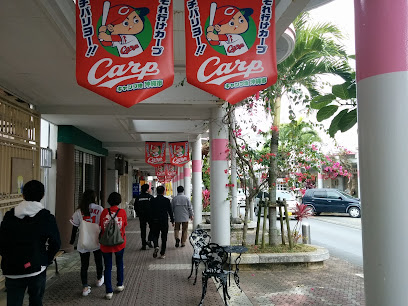
Essential bars & hidden hideouts
Bacon Bar Japan
Discover Bacon Bar Japan in Okinawa, where delicious bacon dishes meet a vibrant bar atmosphere, perfect for food lovers and tourists alike.
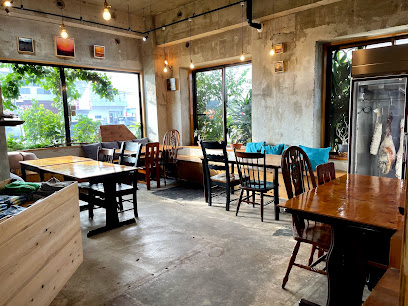
Sammy’s Bar Kiwi
Experience the vibrant nightlife at Sammy’s Bar Kiwi in Chatan, Okinawa, where cocktails and local culture blend seamlessly.

Howdy Garden IrishPub
Discover the vibrant Howdy Garden Irish Pub in Naha, Okinawa - a perfect blend of Irish charm and local hospitality awaits you.
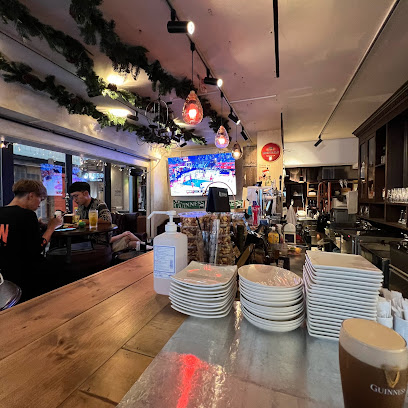
Live Music Bar JET
Discover Okinawa's vibrant nightlife at Live Music Bar JET, where local talent and an electric atmosphere promise unforgettable evenings.
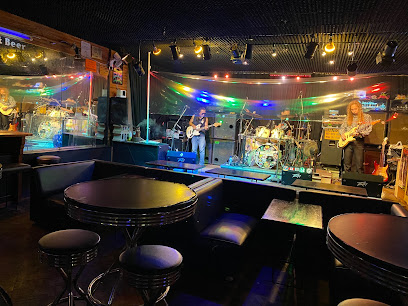
Studio Bar
Experience the vibrant nightlife of Okinawa at Studio Bar, a premier karaoke destination for music lovers and fun seekers.
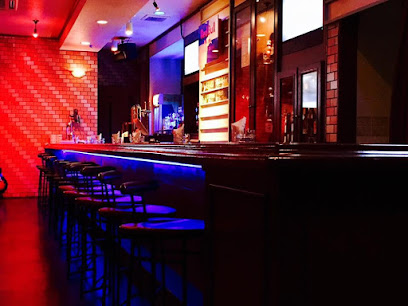
Paddy Mac's Irish Pub
Discover the charm of Paddy Mac's Irish Pub in Okinawa, where authentic Irish cuisine meets a vibrant atmosphere for an unforgettable night out.
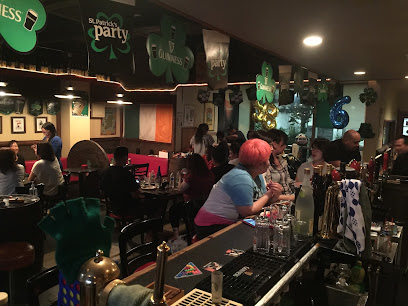
I’s Public Ale House
Experience the vibrant atmosphere and extensive beer selection at I's Public Ale House in Chatan, Okinawa, a must-visit bar for all travelers.
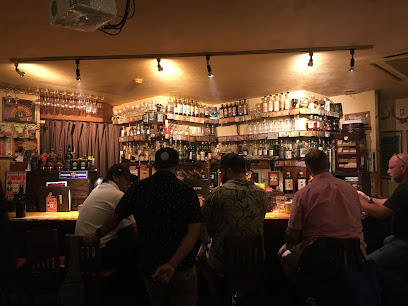
First Chance
Discover Okinawa's vibrant nightlife at First Chance, a premier hookah bar and dart lounge offering an unforgettable blend of relaxation and entertainment.
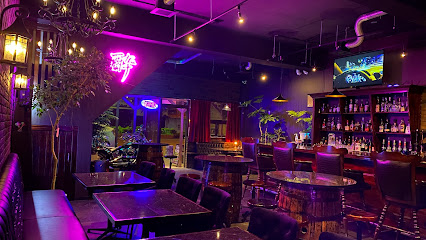
cult bar ‘FREAKS A GO-GO’
Experience the vibrant nightlife at Freaks A Go-Go, a quirky bar in Naha, Okinawa, where art and music create an unforgettable atmosphere.
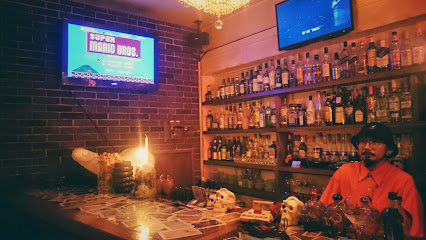
Bobby's
Experience the vibrant nightlife of Okinawa at Bobby's, where craft cocktails and a lively atmosphere await you.
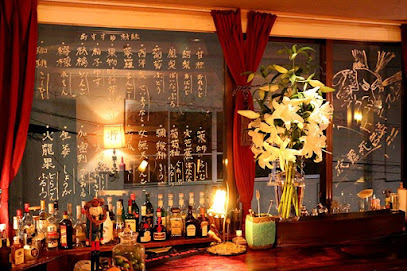
Irish Pub Howdy
Discover the vibrant Irish Pub Howdy in Okinawa - your go-to spot for hearty food, refreshing drinks, and lively sports in a welcoming atmosphere.
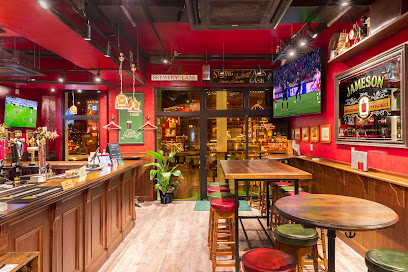
Slum Bar
Discover the lively spirit of Okinawa at Slum Bar, where eclectic drinks and vibrant nightlife create unforgettable memories.
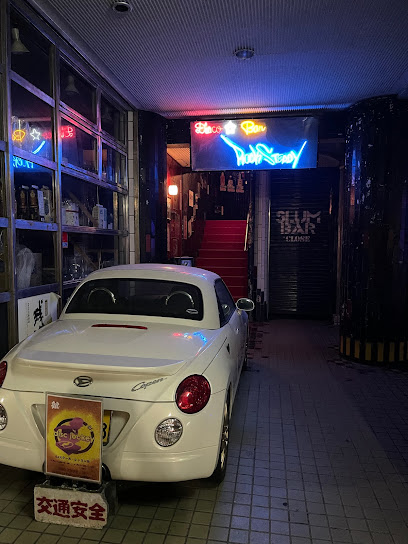
Side Door
Discover the vibrant nightlife of Okinawa at Side Door, a cozy bar offering creative cocktails and a welcoming atmosphere for all.
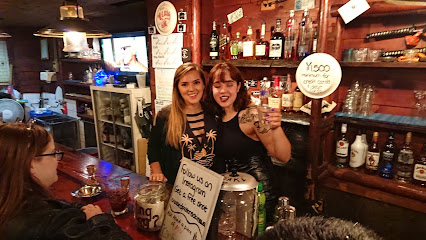
NTreeHouse Okinawa
Discover the vibrant nightlife of Okinawa at NTreeHouse, a unique bar offering local flavors and a cozy atmosphere.
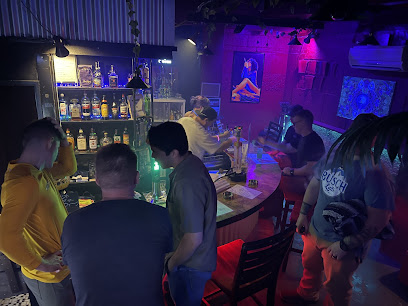
Party Bar
Discover the vibrant nightlife at Party Bar in Okinawa, where cocktails flow and the dance floor awaits you.
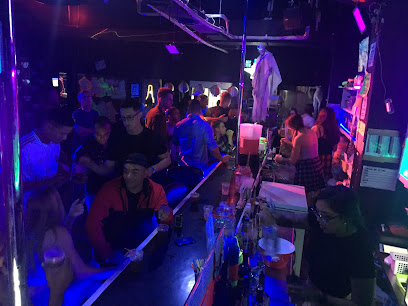
Local Phrases
-
- Helloハーイ
[Hāi] - Goodbyeじゃねー
[Jane] - Yesうん
[Un] - Noいや
[Iya] - Please/You're welcomeお願いします
[Onegaishimasu] - Thank youありがとう
[Arigatō] - Excuse me/Sorryすみません
[Sumimasen] - How are you?お元気ですか?
[Ogenki desu ka?] - Fine. And you?元気です。あなたは?
[Genki desu. Anata wa?] - Do you speak English?英語を話せますか?
[Eigo o hanasemasu ka?] - I don't understandわかりません
[Wakarimasen]
- Helloハーイ
-
- I'd like to see the menu, pleaseメニューを見せてください
[Menyū o misete kudasai] - I don't eat meat肉は食べません
[Niku wa tabemasen] - Cheers!乾杯!
[Kanpai!] - I would like to pay, pleaseお会計をお願いします
[Okaikei o onegaishimasu]
- I'd like to see the menu, pleaseメニューを見せてください
-
- Help!助けて!
[Tasukete!] - Go away!出て行って!
[Dete itte!] - Call the Police!警察を呼んで!
[Keisatsu o yonde!] - Call a doctor!医者を呼んで!
[Isha o yonde!] - I'm lost道に迷っています
[Michi ni mayotte imasu] - I'm ill具合が悪いです
[Guai ga warui desu]
- Help!助けて!
-
- I'd like to buy...買いたいです
[Kaitai desu] - I'm just looking見てるだけです
[Miteru dake desu] - How much is it?いくらですか?
[Ikura desu ka?] - That's too expensive高すぎます
[Takasugimasu] - Can you lower the price?値段を下げてもらえますか?
[Nedan o sagete moraemasu ka?]
- I'd like to buy...買いたいです
-
- What time is it?今何時ですか?
[Ima nanji desu ka?] - It's one o'clock一時です
[Ichiji desu] - Half past (10)十時半です
[Jūji han desu] - Morning朝
[Asa] - Afternoon午後
[Gogo] - Evening夕方
[Yūgata] - Yesterday昨日
[Kinō] - Today今日
[Kyō] - Tomorrow明日
[Ashita] - 1一
[Ichi] - 2二
[Ni] - 3三
[San] - 4四
[Yon] - 5五
[Go] - 6六
[Roku] - 7七
[Nana] - 8八
[Hachi] - 9九
[Ku] - 10十
[Jū]
- What time is it?今何時ですか?
-
- Where's a/the...?…はどこですか?
[… wa doko desu ka?] - What's the address?住所は何ですか?
[Jūsho wa nan desu ka?] - Can you show me (on the map)?地図で示してもらえますか?
[Chizu de shimeshite moraemasu ka?] - When's the next (bus)?次の(バス)はいつですか?
[Tsugi no (basu) wa itsu desu ka?] - A ticket (to ....)…までのチケットをください
[… made no chiketto o kudasai]
- Where's a/the...?…はどこですか?
History of Okinawa
-
From the 15th to the 19th century, Okinawa was the heart of the Ryukyu Kingdom, an independent kingdom that played a vital role in maritime trade across Southeast Asia. The kingdom's strategic location made it a hub for commerce and cultural exchange, especially with China, Japan, Korea, and Southeast Asian nations. Shuri Castle in Naha was the royal palace and a symbol of the kingdom's prosperity and unique culture.
-
In 1609, the Satsuma Domain from southern Kyushu invaded the Ryukyu Kingdom, bringing it under Japanese control while allowing it to maintain a façade of independence. This dual subjugation to both China and Japan led to a unique blend of cultural influences, evident in Okinawa's language, arts, and religious practices.
-
The Ryukyu Kingdom was formally annexed by Japan in 1879 during the Meiji Restoration, which aimed to modernize and centralize Japan. The annexation marked the end of the Ryukyu Kingdom and the beginning of Okinawa Prefecture. This period saw significant cultural and social changes as Okinawans were integrated into the Japanese nation-state.
-
The Battle of Okinawa in 1945 was one of the bloodiest battles of World War II. The island became a crucial battleground, resulting in immense loss of life and widespread destruction. The aftermath of the battle had long-lasting effects on Okinawan society and landscape, with many historical sites being restored or memorialized to honor those who suffered and perished.
-
After World War II, Okinawa was placed under U.S. administration, separate from mainland Japan. This period lasted until 1972 and brought about significant cultural and economic changes as American military bases were established across the islands. The presence of U.S. military personnel significantly influenced local culture and daily life, aspects of which can still be seen today.
-
In 1972, Okinawa was officially returned to Japanese sovereignty, marking the end of U.S. administration. This period saw efforts to reintegrate Okinawa into Japan's political, economic, and cultural frameworks. However, the legacy of the U.S. military presence remains a contentious issue, highlighted by ongoing debates about base locations and their impact on local communities.
-
In recent decades, there has been a resurgence of interest in traditional Ryukyuan culture, arts, and language. Efforts to preserve and promote Okinawan heritage have led to a revival of traditional music, dance, crafts, and festivals. Sites like Shuri Castle and the Okinawa Prefectural Museum serve as cultural touchstones that connect modern Okinawans with their rich historical legacy.
Okinawa Essentials
-
Okinawa is accessible via Naha Airport (OKA), the main gateway to the island, which is well-connected to major cities in Japan and several international destinations. Direct flights are available from Tokyo, Osaka, Seoul, Taipei, Hong Kong, and Shanghai. Once you arrive at Naha Airport, you can take a taxi, bus, or the Okinawa Monorail (Yui Rail) to reach your destination within the city.
-
Getting around Okinawa is convenient with multiple transportation options. The Okinawa Monorail (Yui Rail) connects Naha Airport to Shuri Castle, passing through central Naha. For broader travel across the island, buses are available, though they can be infrequent outside major routes. Renting a car is highly recommended for exploring the island at your own pace, especially for visiting remote beaches and historical sites. Taxis are also readily available but can be expensive for long distances.
-
The official currency in Okinawa, as in the rest of Japan, is the Japanese Yen (JPY). Credit cards are widely accepted in hotels, restaurants, and shops in urban areas, but cash is still king in rural areas and smaller establishments. ATMs are available at convenience stores, banks, and post offices, but not all accept foreign cards, so it’s advisable to carry sufficient cash.
-
Okinawa is generally a very safe destination for tourists. The crime rate is low, and serious crimes targeting tourists are rare. However, it is always wise to remain vigilant, especially in crowded areas like Kokusai Street in Naha. Avoid isolated areas at night and keep an eye on your belongings. Be cautious of natural hazards such as strong ocean currents and jellyfish when swimming.
-
In case of emergency, dial 110 for the police and 119 for ambulance and fire services. Major hospitals in Naha, like Okinawa Prefectural Hospital, offer emergency services. It’s recommended to have travel insurance that covers medical emergencies. Pharmacies (yakkyoku) are widely available for minor health issues, and English-speaking staff can often be found in larger establishments.
-
Fashion: Do dress conservatively, especially when visiting temples and shrines. Avoid overly casual or revealing clothing in these settings. Religion: Do respect local religious customs. Always remove your shoes before entering temples and shrines. Public Transport: Do give up your seat to elderly passengers and avoid talking loudly or making phone calls. Eating and drinking on public transport is also frowned upon. Greetings: Do bow slightly when greeting locals. A handshake is less common but acceptable among younger generations. Eating & Drinking: Do try local dishes like Okinawa soba and taco rice. Always say 'itadakimasu' before eating and 'gochisousama' after finishing your meal. Don’t leave food uneaten, as it is considered wasteful.
-
To experience Okinawa like a local, visit traditional markets like Makishi Public Market in Naha where you can buy fresh seafood and local produce. Try the local specialty awamori, an Okinawan distilled spirit, at a local izakaya. Attend local festivals such as the Naha Tug-of-War or the Eisa Dance Festival to immerse yourself in the local culture. Renting a bicycle to explore less touristy areas can also offer a unique perspective of Okinawan life.
Trending Landmark in Okinawa
Nearby Cities to Okinawa
-
Things To Do in Jeju City
-
Things To Do in Batanes
-
Things To Do in Fukuoka
-
Things To Do in Mokpo
-
Things To Do in Suncheon
-
Things To Do in Gwangju
-
Things To Do in Busan
-
Things To Do in Hiroshima
-
Things To Do in Ulsan
-
Things To Do in Jeonju
-
Things To Do in Daegu
-
Things To Do in Gyeongju
-
Things To Do in Pohang
-
Things To Do in Daejeon
-
Things To Do in Ilocos Norte













